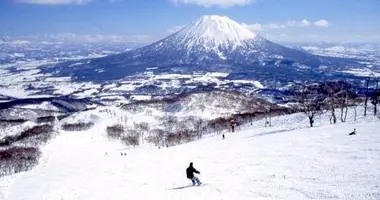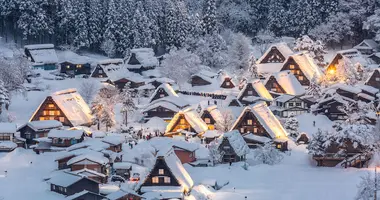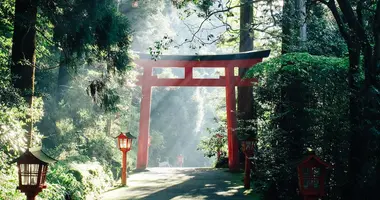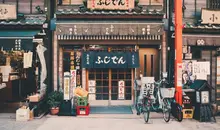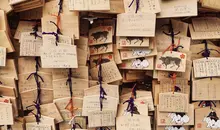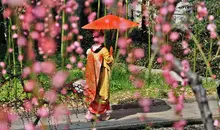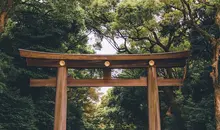Japan Hot Spring Experience
- Published on : 23/03/2013
- by : Japan Experience
- Youtube
Enjoy Onsen: the deepest plunge one can take into Japanese culture is in the onsen (hot spring).
Onsen Bathing: Immersion in a Japanese hot spring bath 温泉
Mark Brazil
If you have successfully negotiated the genkan, adjusted to shuffling in surippa, are a dab-hand with chopsticks, know your tokonoma from your kotatsu, and are comfortable sleeping in futon then its time to take the next step. Taking cultural immersion to the extreme, the deepest plunge one can take into Japanese culture is in the onsen (hot spring).
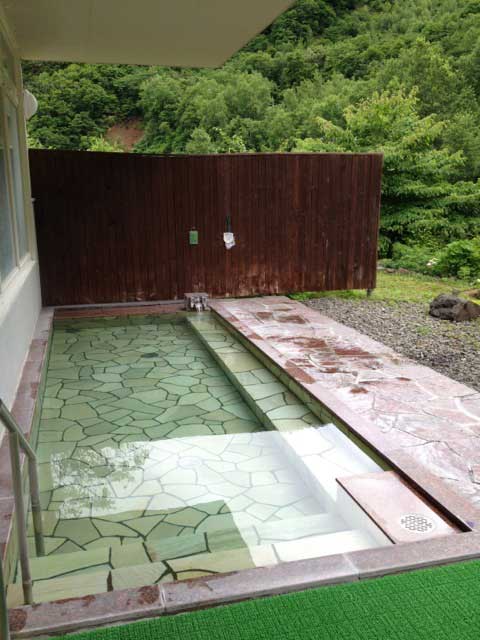 It is the natural view, as much as the pleasant heat, that makes the outdoor pool so attractive
It is the natural view, as much as the pleasant heat, that makes the outdoor pool so attractive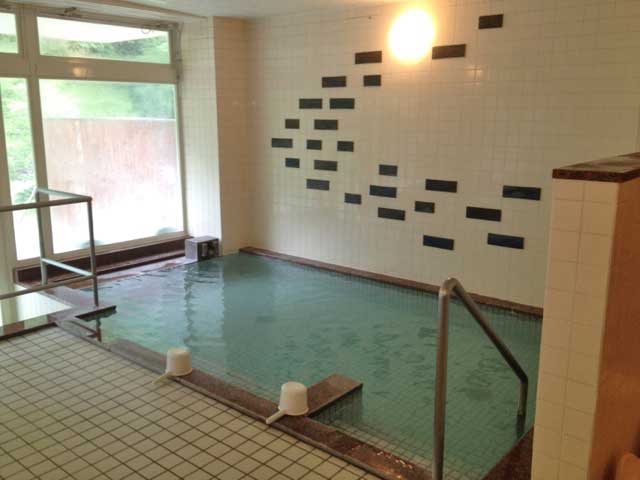 Indoor bath at a Japanese onsen
Indoor bath at a Japanese onsen
Late on the scene with therapies, Japan has only recently embraced massage therapy, aromatherapy, psychotherapy and a host of other therapies, but it always had the most relaxing therapy of all: onsen therapy. Purportedly for cleanliness, the onsen goes far beyond the simple process of cleansing one's body. The onsen is for relaxation.
Admittedly a first visit to an onsen can provoke stress in foreign visitors. Its one thing to make cultural faux pas in public, but the embarrassment quotient can be ratcheted to a much higher level at the thought of doing so while naked.
Some cultures seem to have no issue with nudity, particularly those with saunas, and do not associate it with anything other than the body's natural state; other cultures, laden with prudery, seem to associate naked with naughty and shy away from it as if it is somehow contaminated.
Here in Japan naked is how you are when you bathe, and bathing in public is so common from a very young age that people think nothing of it - as long as it is in the particular context of the hot bath or hot spring. Don't even think about going naked elsewhere, as that is taboo; like so many aspects of Japanese culture context is everything.
So where does one start when planning an onsen visit. First up, one is rarely enough. Hot springs vary so much in mineral content and pH that each one feels different, best to try several, with luck you may become addicted.
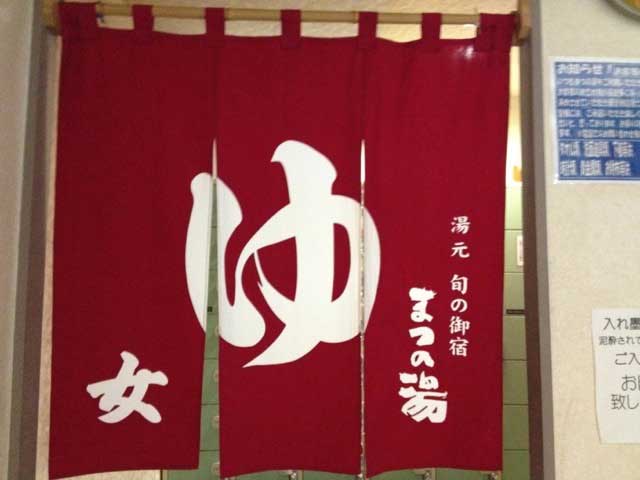 Noren indicate the entrance to the hot spring, the bold character in the centre indicating 'Yu' or hot water, that on the lower lift indicating the ladies bath room, while on the right is the name of the hotel
Noren indicate the entrance to the hot spring, the bold character in the centre indicating 'Yu' or hot water, that on the lower lift indicating the ladies bath room, while on the right is the name of the hotel
Typical Onsen
A typical onsen is approached via a genkan (where shoes are traded for slippers), and then after paying at the reception desk or via a ticket vending machine, one heads down the corridor as directed towards the bathing area.
More than likely there will be cloth hangings (noren) over a pair of entrances. These cloths are often, but not always, colour-coded blue for men and pink for women. Usually those hanging cloths also bear the characters for men and women, sometimes even the English words too, but often not. The easiest short cut to remembering the important characters, is that if one is boxy and appears to have a large L in the middle, then that means woman, whereas the other should have a square, divided into four quarters, atop strange stick 'legs' meaning man. The easy alternative is to just wait and see who goes where!
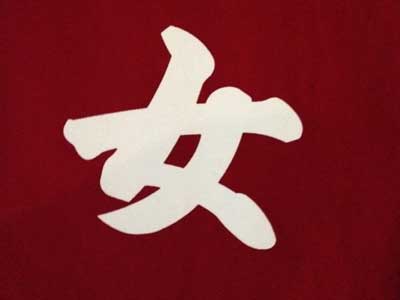 Kanji characters ("woman" on the left; "man" on the right) conveniently placed on the noren
Kanji characters ("woman" on the left; "man" on the right) conveniently placed on the noren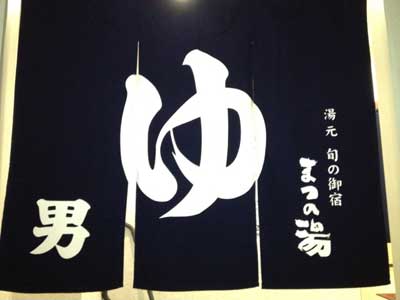 Kanji characters ("woman" on the left; "man" on the right) suitably indicate in which direction one should go
Kanji characters ("woman" on the left; "man" on the right) suitably indicate in which direction one should go
Onsen Etiquette
Once inside the curtains there will likely be a pile of slippers, where previous guests have abandoned theirs on the way into the changing area. Baskets or coin lockers are where one can leave clothing and valuables, and this room is the disrobing room and dressing room.
Most Japanese visitors will be armed with a long narrow towel, which serves both as washcloth and as drying towel. These are usually supplied in the rooms if you are staying at the hotsping; its normal to bring your own if you are visiting the hot spring as a day visitor, or they are available at the front desk. Armed with the small towel, dangling it modestly, the next step is to enter the washing area.
The layout of each hotspring is different, but the basic elements are always the same. The washing area consists of rows of low stools facing taps, showers and mirrors. Containers of body soap and hair shampoo are usually available, standing on a shelf near the mirror. This is where cleansing takes place. Wash and rinse thoroughly here, being careful not to splash any other bathers, and finally making sure that all soap has been rinsed off and that important towel has been rinsed clean of all suds.
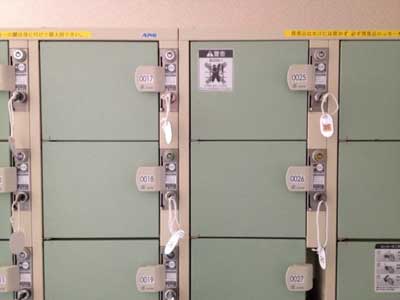 At the entrance there are typically lockers for valuables
At the entrance there are typically lockers for valuables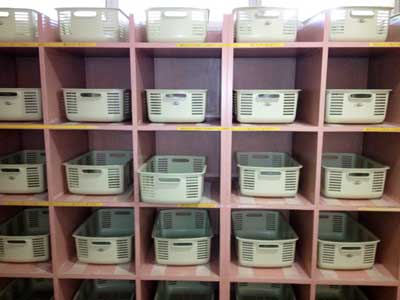
Inside there are baskets for leaving your clothes
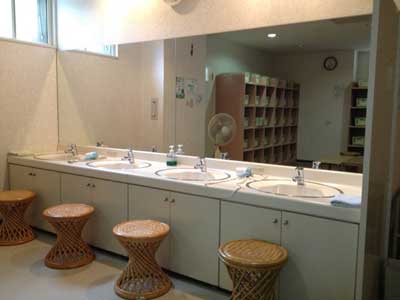 Areas for washing and grooming inside an onsen spa
Areas for washing and grooming inside an onsen spa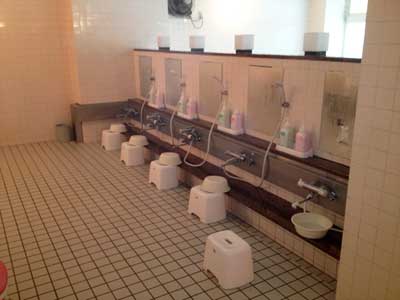 Areas for washing and grooming inside an onsen spa
Areas for washing and grooming inside an onsen spa
Entering the Water
Next is the best part - its time to enter the pool. Some onsen have several pools at different temperatures; some have Jacuzzi-type pools, others have herbal pools, or pools with varying mineral contents; best of all though is when there are outdoor pools.
Outdoor pools typically offer exposure to the elements and also provide a view. One of my favourites is beside a rushing river so that the experience is of bathing in a riverine forest! The pools may be at temperatures higher than you are accustomed to, in which case the best approach is to sit on the edge and dangle your feet only in the hot water.
Once you have adjusted you may slip in a little further, but it is not an endurance test, only stay for a short while then step out to cool down before re-entering the water. Before long you will find yourself sitting neck-deep in thoroughly warming water. Stay still and the sensation of heat will abate and provide a pleasantly warming glow.
A perennial question is where to put the towel while bathing. Certainly it should never be put into the water, and definitely not wrung out there, so park it on the edge in a conspicuous spot. When many people are bathing and all have similar towels, the risk of taking the wrong one by mistake can be avoided by folding the towel neatly and placing it on one's head. The only towel there is definitely yours!
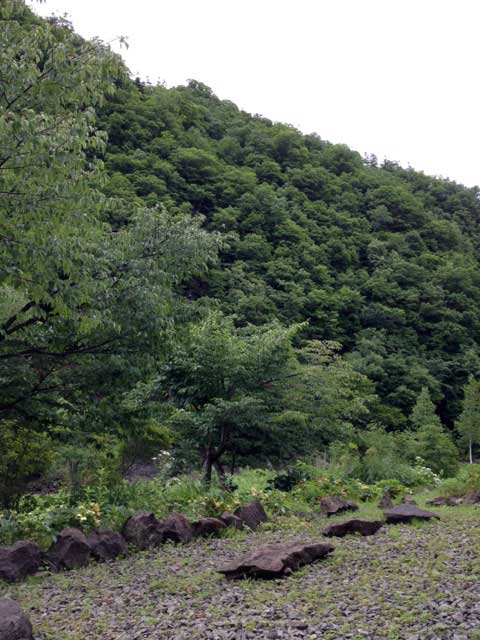 The view from the hot pool
The view from the hot pool
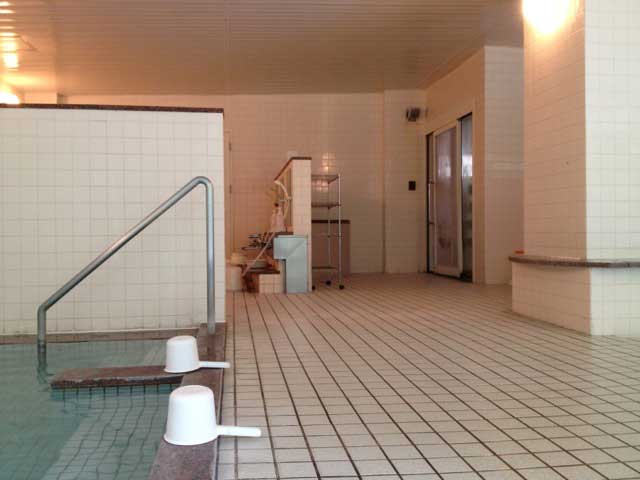 Inside the bath room, there are distinct washing areas (background), well separated from the soaking pool
Inside the bath room, there are distinct washing areas (background), well separated from the soaking pool
Onsen are considered therapeutic for a very wide range of ailments from joint and muscle pains to headaches and skin complaints, all depending on the location and the mineral content. Its important to note though that however enjoyable its not a good idea to stay too long without replenishing with liquid. Hot baths are very dehydrating, and you will likely feel very thirsty afterwards. A cold beer may not be the best way to rehydrate, but between a hot bath and a warm bed a cold beer slips down a treat!
Other Onsen Articles
Arima Onsen
Beppu Onsen
Gero Onsen
Kannawa Onsen
Kyushu Hot Springs
Onsen Cuisine
Japan Onsens
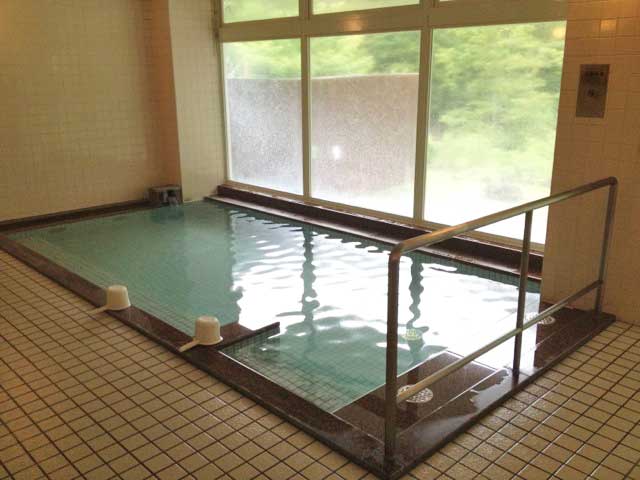 Step carefully as you enter the pool, the water may be hotter than you expect
Step carefully as you enter the pool, the water may be hotter than you expect
